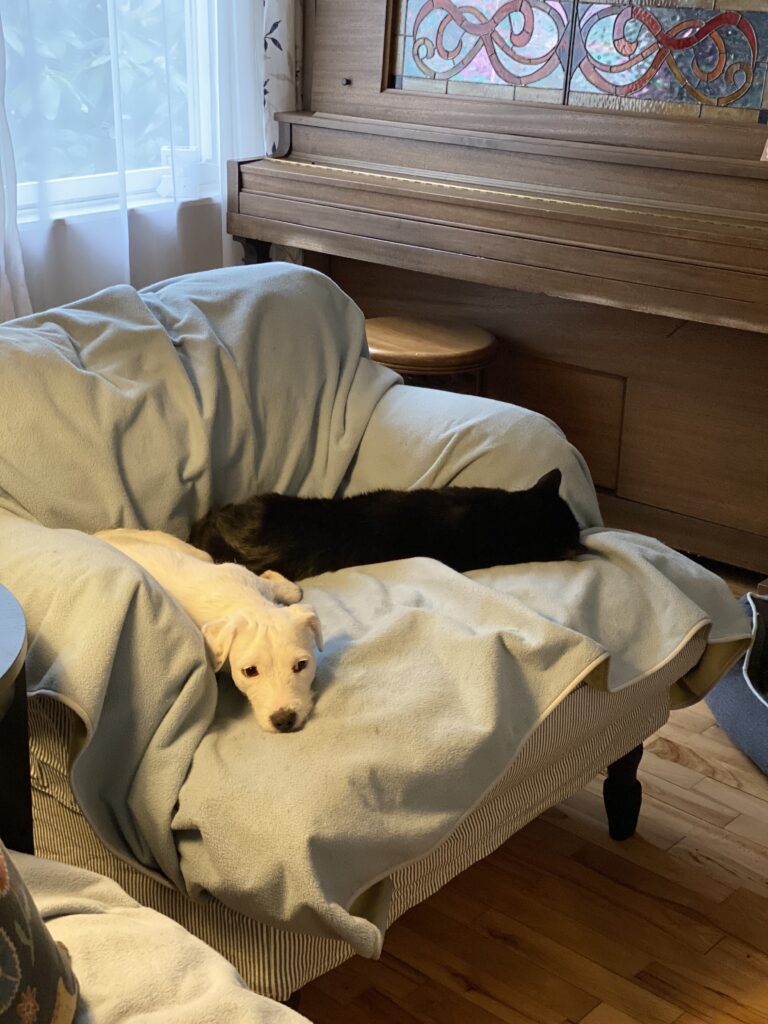
We live in a ‘Yes’ world. Everyone wants everything to be a ‘Yes’ all the time and when it isn’t there is a meltdown. We want positive affirmations through social media and we’re only happy when everything goes perfectly and to plan. We aren’t supposed to say no. We aren’t supposed to punish transgression. Somehow all things are supposed to be learned only through ‘yes’ and rewards.
I can hear you out there, “that’s not my reality.” It isn’t reality for most people and definitely not for their dogs. It is the perception and expectation put out there by social media, mass media and our current community. It’s very much the trend in dog training and I fear it’s setting a lot of dogs and humans up for failure and possible death.
I always look for ways to tell my dogs (and others in my life) ‘yes”. I love being able to celebrate success and much prefer focusing on what went right over what went wrong. That doesn’t mean that I don’t see what I would like to improve upon or the things that are truly dangerous to my dogs, myself or those I’m training. The reality is that we learn nothing when everything goes perfectly – likewise we learn little when everything fails completely. The sweet spot is somewhere in the middle and I love it when things don’t go to plan and I’m able to figure out a solution that then leads to learning something new. It’s my happy place.
The middle ground seems to be hard to find in all aspects of life right now. Everything is polarized and this is equally true in dog training. You have the school of thought that you can never say no or anything negative to your dog. You can’t correct behavior – heck they don’t even want you to show or lure behavior. It all should come naturally and if the dog doesn’t want to, they shouldn’t have to. On the opposite side, there is the “I want my dog to do this, so I will make them” crowd. It feels like everything is punitive – using shock collars, leash pops and harsh commands to get everything they want.
What’s funny is that while the “algorithms” feed these two camps to us constantly, they are actually the smallest part of the real world of dog training, child rearing and every other thing in this world. My dad used to call it the noisy minority.
The reality is that common sense prevails and that means there is hope for all of us. It is okay to say no to your dog. It is okay to use tools to stop or prevent self rewarding behavior that is harmful or dangerous. It is also more than okay to use rewards and yes a lot to teach the dog to do what you want. The heart of it all is to have a relationship with your dog and if that relationship is balanced and based on mutual respect and love, you and your dog are going to have an amazing life together, filled with adventures and memories.
The key is this. If you are always saying no to your dog or always having to use correction to get what you want, maybe you need to rethink your relationship and approach to your dog. If you’re generally happy with your dog, you’re good – share this with someone who isn’t. If you’re unhappy with your dog’s behavior, tired of being a cookie dispenser, feel like your dog is in control and are ready to give up, I hope you’ll reach out. Your life can be better than it is and more importantly, so can your dog’s life. I specialize in relationship building and teaching you the skills to help your dog live their best and safest life.
I always try to give a real world example and this time it’s my personal experience. I have Jack Russell Terriers. They are smart and very independent dogs. I am pleased that I can keep them in a small yard with a 3 foot fence – they don’t leave. I am pleased that I can take them on off leash adventures at the beach and in the woods. All of this was accomplished with positive reinforcement and building understanding through reward and not punishment.
I also do a lot of real world work with my dogs. Both have been taught a demand bark as their alert for finding their target. One dog only uses their alert for doing the work and sometimes for the mailman. My other dog, one day, started using it for everything they wanted – my attention, the treats on the counter, dinner, a favorite toy. You can guess that quickly became a problem. It became a problem because I inadvertently rewarded the behavior. So yep, it’s my fault.
I can’t expire or extinguish the demand bark. We need it for our work, but I definitely need my dog to understand that it is not appropriate to use all the time. Because I rewarded it once, the slot machine of life has kicked in for this dog and they are going to keep trying until the behavior pays again, unless I can teach them that it isn’t going to ever pay again in certain scenarios. This is where the simple word ‘No’ comes into play.
I had to first teach ‘No’ and that starts with me having a clear understanding of what I wanted it to mean for us. Once I had that straight in my head, then I could start conveying that to my dog. He fully understands ‘Yes’ and the meaning of that. I wanted ‘No’ to mean, I need you to stop the behavior you are currently doing and do one of several behaviors that are deemed appropriate. My appropriate behaviors are freeze, focus on me, be silent and wait for release.
In the beginning, my dog increased the demand barking because the training of ‘No’ was providing one of the biggest things he was demanding – attention. Separately we worked on teaching him more appropriate ways to ask for attention. No played a part in that training, but the bigger part was giving him a way to get what he wanted without the behavior I didn’t want. In the end we worked it out. ‘No’ is something I seldom have to use, because my focus is on creating a world where my dog is successful, but it stays in my tool kit for the times I need it, because it is the least punitive way to convey to my dog they aren’t doing what is being asked.
The most important thing is, I also realize sometimes my dogs get to do what they want, even when it isn’t necessarily what I want. This is part of the give and take of a healthy relationship. It can’t always be one sided or it will break and usually when the risk for serious injury or death is highest.
There are times I use bark collars, e-collars, leashes, tie outs and other tools that can be very punitive when used improperly. I use toys, praise and food a thousand times more often and more effectively. Tools are tools and only through proper use can you build the house of your dreams. Use them improperly and you’ll have nothing, but a broken spirit. When you are struggling, ask someone to help you. If you don’t feel good about their help, move on until you find someone who compliments your approach and helps you find your way. There is not one way to teach. The right way is the approach, methodology and tool set that works for you and your dog in this moment. I hope you find your path forward and if you feel we can help you, please reach out.
Happy Mother’s Day.

Great read! Thank you.
I love the phrase: “slot machine of life”! It fits so well what happens when your dog gets rewarded for something you did not really want to train.